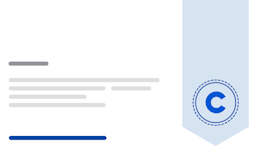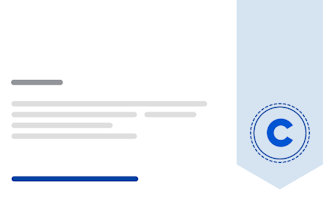What Does MVP Stand For? It’s Not What You Think.
October 7, 2024
Article



This course is part of Product Development for Technical Managers Specialization

Instructor: Michael J. Readey, Ph.D.
Top Instructor
Included with 
Recommended experience
Beginner level
No pre-requisites required
Recommended experience
Beginner level
No pre-requisites required
Learn and apply design thinking tools to the product innovation process.
Develop a product specification that meets critical customer requirements (CCRs).
Learn the tools to generate a variety of product concepts that satisfies the CCRs.
Learn and apply the methods to down-select the many product concepts to the critical few using prototyping and team-based evaluation techniques.

Add to your LinkedIn profile
8 assignments






Add this credential to your LinkedIn profile, resume, or CV
Share it on social media and in your performance review


This course covers the product development process in detail. With the opportunity defined, learners begin with ideation techniques such as Design Thinking to create new product concepts. Learners define the tools to create product specifications that meet customer requirements, then conceptualize different ways of meeting those requirements. Learners conclude by exploring prototyping and the techniques used to down-select to a concept that is then carried through launch.
This course can be taken for academic credit as part of CU Boulder’s Master of Engineering in Engineering Management (ME-EM) degree offered on the Coursera platform. The ME-EM is designed to help engineers, scientists, and technical professionals move into leadership and management roles in the engineering and technical sectors. With performance-based admissions and no application process, the ME-EM is ideal for individuals with a broad range of undergraduate education and/or professional experience. Learn more about the ME-EM program at https://www.coursera.org/degrees/me-engineering-management-boulder.
This course begins with an overview of topics and course structure. We then explore how to develop creativity within ourselves, as all product development efforts begin with ideas from individuals that see opportunities the rest of us don't. With a creative mindset, we can then begin ideating about product opportunities. Two methods are explored, Design Thinking, and Design-Driven Innovation. Design Thinking is all about understanding customer needs, whereas Design-Driven Innovation is all about understanding the meaning products have on people's lives. Both approaches are effective, yet both are quite different!
9 videos3 readings3 assignments1 discussion prompt
If product development is all about solving real problems, we need to understand who, in fact, has these problems, as these people are our potential customers. In this module, we define customers, users, markets and market segments. We also define market size terms such as the TAM, SAM and SOM. Now its time to get specific, and create our Customer Persona, a detailed description of our target customer, enabling us to determine how many potential customers are in our target market.
8 videos3 readings1 assignment2 peer reviews
Understanding the customer's problems allows the product developer to begin thinking about solutions. That process starts with converting customer statements into customer needs, which become Critical Customer Requirements, or CCRs. This defines what the product must do to make the customer happy. Performance metrics are then established and a Product Requirements Matrix defines the most important CCRs, and some target values the product should meet. Finally, knowing what the product should do, it is time to be creative and come up with all the different product ways one can design a product to meet the CCRs, a process known as Concept Generation.
8 videos3 readings1 assignment1 peer review
Successful concept generation creates many possible product designs, far too many to take forward. This module covers the techniques to downselect many designs to a few. From there, the product development team builds simple prototypes suitable to obtain customer feedback. The simplest of these is often called the Minimum Viable Product, or MVP. Customers can evaluate the MVP to see if the PD Team is on the right track - as MVPs don't cost much money or time to build. With greater confidence with the product concept, the team can build even more refined prototypes, ultimately enabling the final product concept to be defined.
8 videos2 readings2 assignments1 peer review
Thus far, the course have discussed physical products and physical prototyping. Yet many products are digital, such as digital apps or websites. Prototypes can be made for these products too, although the process is a bit different. In this module, the digital prototyping process is covered, culminating in a prototyping workshop showing students how to use online tools to create their own digital app prototype.
5 videos6 readings1 assignment



CU Boulder is a dynamic community of scholars and learners on one of the most spectacular college campuses in the country. As one of 34 U.S. public institutions in the prestigious Association of American Universities (AAU), we have a proud tradition of academic excellence, with five Nobel laureates and more than 50 members of prestigious academic academies.

University of Colorado Boulder
Specialization

University of Colorado Boulder
Build toward a degree
Course

University of Colorado Boulder
Build toward a degree
Course

Technion - Israel Institute of Technology
Course
This course is part of the following degree program(s) offered by University of Colorado Boulder. If you are admitted and enroll, your completed coursework may count toward your degree learning and your progress can transfer with you.¹
This course is part of the following degree program(s) offered by University of Colorado Boulder. If you are admitted and enroll, your completed coursework may count toward your degree learning and your progress can transfer with you.¹
University of Colorado Boulder
Degree · 24 months
¹Successful application and enrollment are required. Eligibility requirements apply. Each institution determines the number of credits recognized by completing this content that may count towards degree requirements, considering any existing credits you may have. Click on a specific course for more information.







Unlimited access to 10,000+ world-class courses, hands-on projects, and job-ready certificate programs - all included in your subscription

Earn a degree from world-class universities - 100% online

Upskill your employees to excel in the digital economy
Access to lectures and assignments depends on your type of enrollment. If you take a course in audit mode, you will be able to see most course materials for free. To access graded assignments and to earn a Certificate, you will need to purchase the Certificate experience, during or after your audit. If you don't see the audit option:
The course may not offer an audit option. You can try a Free Trial instead, or apply for Financial Aid.
The course may offer 'Full Course, No Certificate' instead. This option lets you see all course materials, submit required assessments, and get a final grade. This also means that you will not be able to purchase a Certificate experience.
When you enroll in the course, you get access to all of the courses in the Specialization, and you earn a certificate when you complete the work. Your electronic Certificate will be added to your Accomplishments page - from there, you can print your Certificate or add it to your LinkedIn profile. If you only want to read and view the course content, you can audit the course for free.
If you subscribed, you get a 7-day free trial during which you can cancel at no penalty. After that, we don’t give refunds, but you can cancel your subscription at any time. See our full refund policy.
Yes. In select learning programs, you can apply for financial aid or a scholarship if you can’t afford the enrollment fee. If fin aid or scholarship is available for your learning program selection, you’ll find a link to apply on the description page.

These cookies are necessary for the website to function and cannot be switched off in our systems. They are usually only set in response to actions made by you which amount to a request for services, such as setting your privacy preferences, logging in or filling in forms. You can set your browser to block or alert you about these cookies, but some parts of the site will not then work.
These cookies may be set through our site by our advertising partners. They may be used by those companies to build a profile of your interests and show you relevant adverts on other sites. They are based on uniquely identifying your browser and internet device. If you do not allow these cookies, you will experience less targeted advertising.
These cookies allow us to count visits and traffic sources so we can measure and improve the performance of our site. They help us to know which pages are the most and least popular and see how visitors move around the site. If you do not allow these cookies we will not know when you have visited our site, and will not be able to monitor its performance.
These cookies enable the website to provide enhanced functionality and personalization. They may be set by us or by third party providers whose services we have added to our pages. If you do not allow these cookies then some or all of these services may not function properly.